Guatemala
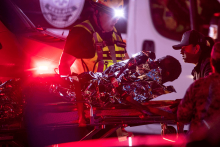
At least 39 migrants from Central and South America died after a fire broke out late on Monday at a migrant holding center in the Mexican northern border city of Ciudad Juarez, apparently caused by a protest over deportations, officials said on Tuesday.

ON A SUNDAY morning in Atlanta in April 1899, white churchgoers, dressed in their finest, filled the pews to hear the word of God. As the postlude concluded, the congregants poured out of their houses of worship, bought sandwiches for lunch, and crammed onto trains heading toward Newnan, Ga., to watch the gruesome extrajudicial murder of Sam Hose.
Hose, a 21-year-old Black farmhand, had been pulled off a train by a white mob and was later murdered while thousands watched his lynching. “‘Sweet Jesus!’ Hose was heard to exclaim, and these were believed to be his last words,” writes Philip Dray in At the Hands of Persons Unknown.
The relationship between religion and injustice in the United States is complicated. U.S. Christians tend to emphasize the role of Christianity in contesting injustice, while forgetting images such as churchgoers going seamlessly from worship to an extrajudicial execution.
In the wake of George Floyd’s murder, the U.S. witnessed the largest protests in our history. This new moment in the long movement for human freedom arises in response to high-profile police and white vigilante killings of Black men and women; it demands an end to police violence and redress for centuries of racial injustice. This “reckoning” has pushed local, state, and national efforts to reform police practices, hold individual police officers accountable for abusive violence, repair the injustice caused by policies such as redlining, and establish the truth about lynching.

I GREW UP IN Guatemala, a country where the Indigenous people make up more than 50 percent of the population. I was told growing up that my ancestors were Europeans (Spaniards and Italians). Even though I was identified as ladino (not Indigenous) by Guatemalan official nomenclature, I was attracted to Mayan languages and communities (K’iche’, Kaqchikel, and Q’eqchi’, among others).
I felt a resonance with their orientation toward the earth, their deep sense of communal cohesion, and their mystical world of ancestral spirits. After doing some genealogical work, I learned that one of my grandfathers was Mayan.
I began to notice practices and attitudes in my family that I was certain were of Indigenous origins: my dad’s idiosyncratic disregard for manufactured material goods in favor of plants; my uncle’s pouring of alcohol on the floor before serving a drink; my mom’s smoking of cigars as an invitation to the spirits and San Simón to be with us in our gatherings. All have an Indigenous provenance.
As I learned more, I recognized those familial practices as part of a millennia-old cosmovision and mindset, a way of viewing the cosmic order of a civilization through which Indigenous peoples organize everyday activities, even today. Each is a theo-ethical gesture for safeguarding their relationship with life itself, in all life’s diversity.
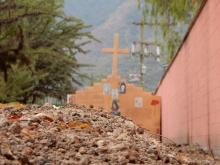
The rise of Indigenous-led conservation models holds promise.

An American missionary priest, killed in Guatemala in 1981, has moved a step closer to being named a Catholic saint, after Pope Francis declared him the first-ever American martyr.
The Rev. Stanley Rother, a priest from the Archdiocese of Oklahoma City, served for nearly 15 years in Guatemala before being shot dead, during the country’s bloody civil war that divided the country from 1960 to 1996.
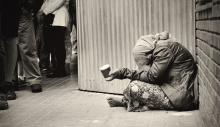
I don’t practice the corporal works of mercy.
The realization left me stunned. As I sat in a cluster of retreatants I thought about what that meant. Sure, I donate money to various charities, participate in food drives, and donate clothes that I no longer need, but I do not practice the corporal works of mercy — I have other people or institutions do it for me.
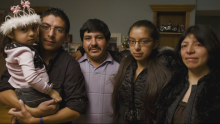
On the day Sam and Elida we to be deported, I arrived at the airport, with the entire Mejia family, and was witness to one of the most intensely sad events I’ve ever seen: a mother and father saying goodbye to their children, not knowing when they would see them again. As I drove home from the airport that night, I thought to myself, if every politician, faith-leader, and citizen in the U.S. could have met the Mejia family, and then seen the family ripped apart, the U.S. would not be deporting hundreds of thousands of immigrants every year. The raids that are descending on immigrant communities right now, targeting Central American families who recently crossed the border escaping extreme violence, would most likely not be happening. The de-humanizing term ‘illegal alien’ would not proliferate across our airwaves.

CANADIAN MINING companies have left a trail of destruction around the world—mostly in places where people are poor and vulnerable.
The earliest conflicts caused by Canadian mining exploded in Guatemala in the early 1960s when the nickel company Inco dug into the northern mountainside of Guatemala’s largest freshwater lake, Lago Izabal. Almost 155 square miles of traditional Kekchi-Maya land was expropriated to create Inco’s Exmibal mine. As the region descended into bitter war, Guatemalan oligarchs and their military, with the support of Canadian-mining and U.S. geopolitical interests, exterminated all popular dissent. Dozens of Kekchi leaders were killed or disappeared; four prominent leaders who had published a report condemning the Inco-Exmibal deals were brutally assaulted and two of them assassinated. The Exmibal mine operated for three years before Inco abandoned it, never paying a nickel in royalties to Guatemala

DOÑA DIODORA STANDS on the side of the mountain, shivering. She’s tending to her skinny cows. A simple adobe hut stands here on the edge of her land in the Guatemalan highlands—“so I can stay and look after the animals,” she says. “But I don’t know what I am going to do about water. They’ve taken away the water.”
Tears drip down out of her good eye. She dries them on a thin sleeve. The other eye socket, shattered where the bullet went through, seeps with yellow pus. “Me siento un poco triste—a little sad,” she explains in her halting, quiet Spanish. It is cold on the mountain, achingly so. And, mysteriously, the water has gone: Old streams and wells are dusty. The cows look ill.
Just down the crumbling mountain, the tailings pond from the Marlin mine glows a weird shade of neon green.
I first heard about the Marlin mine—operated by Vancouver’s Goldcorp—in 2005, before it opened. That year I was going to Guatemala with a youth group from my diocese, and we were warned: Don’t wear anything that identifies you as Canadians. What? Canadians? We’re supposed to be the good guys in the story. Well, not anymore.
Surely there is a mine for silver, and a place for gold to be refined ... They put their hand to the flinty rock, and overturn mountains by the roots. They cut out channels in the rocks, and their eyes see every precious thing ... But where shall wisdom be found? —Job 28:1, 9-12
THE DIRT ROAD twists down into a gully at La Puya, Guatemala, and up the other side, slipping between the knee-high fields of holy corn. The river doesn’t run anymore at the bottom, but the butterflies gather in remembrance of the water of times past. Hundreds of them rest and then flutter suddenly up as a woman goes by to gather fresh basil or chipilin from the little herb and vegetable garden that grows in tires and the ground all along the blocked access road leading into the proposed gold-mine site.
La Puya is the curve in the road where a thorn tree used to stand, throwing fine sharp needles down on unsuspecting passersby. Now it is a well-ordered encampment of neighbors from the twin municipalities of San Pedro Ayampúc and San José del Golfo, 10 miles northwest of Guatemala City.
These women and men are here in a startling act of markedly Christian peaceable resistance. They have been at the gates around the clock and around the calendar since March 2, 2012, when a lone woman pulled her car across the access road to the mine, blocking some incoming machinery. Then a bus bumping down the main road stopped, and the passengers piled off when they saw what was happening.
Then more people came, and dozens stayed. They settled in for a long night that became a long season of resistance. Local communities had had enough of the obfuscation, lies, and manipulation from Radius Gold, a mining company based in Vancouver, Canada.
In La Puya, Guatemala, Christian community members are nonviolently standing up against gold and silver mining companies.
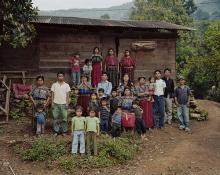
Sunday afternoon, March 28, 1982. If you were an evangelical Christian living in Guatemala, watching TV, your heart would have been beating faster and tears of joy may have flowed down your cheeks.
A man was speaking so thoughtfully, with the Bible in hand. He was teaching the audience, “If there is no peace within the family, there would be no peace in the world. If we want peace, we need at first to be at peace in our hearts.” He went on, “Guatemala is the chosen people of the New Testament.”
That 55-year-old man was Guatemalan General Efrain Rios Montt, pastor of the Iglesia Verbo (Church of the Word), who had recently become president of Guatemala through a military coup.
On May 10, 2013, a Guatemalan court sentenced Rios Montt to 80 years in prison after finding him responsible for deliberate killings by the armed forces of at least 1,771 members of the Maya Ixil population during his 1982-83 rule.
ON A FLIGHT from New York City to Guatemala some years back, I met a woman from Oklahoma on her way to visit her soon-to-be internationally adopted daughter. “I just found them, the Guatemalan children, on the internet and thought they were so beautiful,” she said. She beamed, her blue eyes, carefully painted lips, and cross earrings all sparkling.
Guatemala’s landscape, where wistful clouds cruise above fertile fields and past rumbling volcanoes, reflects the volatility of the country’s tragic history. That history includes a decades-long civil war, ending in 1996, in which more than 200,000 people were killed, mainly by U.S.-backed government forces. To visit the country is to experience not just that history, but also a culture that pioneered astronomy, devised an intricate written language, and erected engineering miracles. But, asked whether she intended to preserve her adoptive daughter’s ties to her homeland, the woman I met on the plane said, “If she wants to see it, we’ll bring her. But really, there’s nothing there.”
The attitude that “there’s nothing there” is, all too frequently, the attitude of missionaries en route to Guatemala. But when Joel Van Dyke arrived in 2003 from Philadelphia, he suspected there was plenty there—there in the country’s slums and in the cities’ bursting garbage dumps, where thousands of people find sustenance every day. He set out to find what was there by learning to ask the right questions of gang members, slum dwellers, sex workers, and the local faith leaders who work with them. To do this, he told Sojourners, he had to adopt the attitude “let’s go see what God is doing in the world and let that color and shape the theological discourse.”
The spirit of the Lord set me down in the middle of a valley; it was full of bones. He led me all around them; there were very many lying in the valley, and they were very dry. —Ezekiel 37:1-2
IT IS A March morning in Guatemala City: sunny, cool, windy. I walk down a dry, dusty lane, out along a finger of land jutting perilously between ravine and ravine. To one side, vultures circle in lazy spirals on the updraft, watching everything down below—waiting. We are near the garbage dump and the slums that surround it. Here, on the road through La Verbena cemetery, hospital waste trucks rumble by; when they reach the end they tip their pile down into the valley.
I am early, so I walk slowly, kicking stones through the rows of niche tombs, stacked five high, artificial flowers drooping down. I pass some of the nicer mausoleums, and then I am among the graves in the scrub grass, markers tilted over or gone. Some are simple piles of dirt; others are human-sized hollows, where the bodies have been removed and dumped into the bone pits.
I stand outside a cement block wall, papered with the faces of the disappeared. A few young staff members arrive and wait as well, under pine trees that are blowing wildly now, this way and that. They eye me, but we say nothing.
The “disappeared” stare at me from the abyss of silence. Many are women, their hair and clothes out of style now. The men sport moustaches from the 1980s. I imagine each one grabbed by murderers, thrown into a van, driven somewhere dark, filthy, disgusting, sticky with blood, urine, and feces. The women are raped, the men too, and all of them mutilated, burned, or electrocuted, and finally killed. Some are then brought here and buried.
During the Central American wars of the 1980s, nearly 200,000 Guatemalans were killed or disappeared. The bloodiest period came during the presidential term of Gen. Efrain Rios Montt, when entire villages were burned and civilians, primarily indigenous people, were massacred.
Rios Montt was a graduate of the U.S. School of the Americas and received millions of dollars in military aid from the U.S. He was also an evangelical/Pentecostal minister and a darling of the Religious Right.
 Could my mission really be confined to seeking the best for the children to whom I gave birth? Or, as a Christian, should I define "family" more broadly? I'd see images of women and children suffering around the world, and those puzzling verses returned to my mind. Maybe, instead of obsessing over the happiness of my babies, I should stick my head out of the window, so to speak, look around, and ask, "Who is my family?"
Could my mission really be confined to seeking the best for the children to whom I gave birth? Or, as a Christian, should I define "family" more broadly? I'd see images of women and children suffering around the world, and those puzzling verses returned to my mind. Maybe, instead of obsessing over the happiness of my babies, I should stick my head out of the window, so to speak, look around, and ask, "Who is my family?"
It didn't feel right to simply shrug my shoulders and blithely accept my good fortune as compared to that of people born into extreme poverty. I'd buy my kids their new school clothes and shoes and then think of mothers who did not have the resources to provide their children with even one meal a day. I'd wonder: what's the connection between us? Does the fact that $10 malaria nets in African countries save whole families have anything to do with my family buying a new flat-screen TV? Should it? Is there any connection between me, a suburban, middle class mom, and women around the world?
